”No barrel, even though it’s lost a hoop
or end-piece, ever gapes as one whom I
saw ripped right from his chin to where we fart:
his bowels hung between his legs, one saw
his vitals and the miserable sack
that makes of what we swallow excrement.
While I was all intent on watching him,
he looked at me, and with his hands he spread
his chest and said: “See how I split myself!
See now how maimed Mohammed is! And he
who walks and weeps before me is Alģ,
whose face is opened wide from chin to forlock.” ( Dante, Divine Comedy )
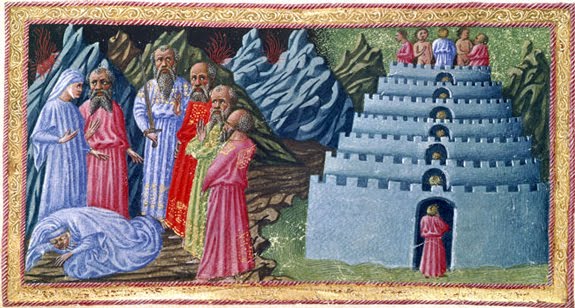
''The picture above pictures Dante and his guide Virgil conversing with Ovid, Homer and Horace before the castle of Limbo. Its seems that the first ring of hell (limbo) is not such a bad place. In the Christian view none of the horrific punishments to be dealt out in the subsequent circles of hell can hold a beeswax candle to not being in the presence of the lord. So the first ring of hell is actually quite a nice place environmentally; lots of green fields and a cool seven-sided castle, just no direct contact with the supreme being.''
”This viciously unsympathetic treatment of these central figures of the Islamic religious tradition is exactly what Edward Said’s theory of orientalism would lead us to expect in a bastion of the Western canon such as Dante.But the portrait of Mohammad in the Divine Comedy is an isolated moment, and wider reading in Dante reveals a surprisingly positive treatment of figures from the Islamic world.” ( Paul A. Cantor )
Rome has always attracted writers.It is the symbol of Western thought, and the icon of a form of rigid elasticity; various shades and hues of Eurocentrism that exclude all non-Western cultures within its large bounds, but not quite as orthodox as its detractors would maintain. Thus writers, as if in Dante’s Limbo have yearned to find Rome, to have access to Christian revelation, but often finding themselves like Kafka in the The Castle wishing to pass by the gatekeeper and pass through to the other side, but wary of its aburd fantasms that may lurk there. Like Kafka in Limbo, they wind their way through Rome exploring the puzzling sections of Limbo as a rite of passage in their own personal Divine Commedia, where the forces of attraction and repulsion attain a point of conjunction keeping one perpetually off balance yet grounded by some intangible force.
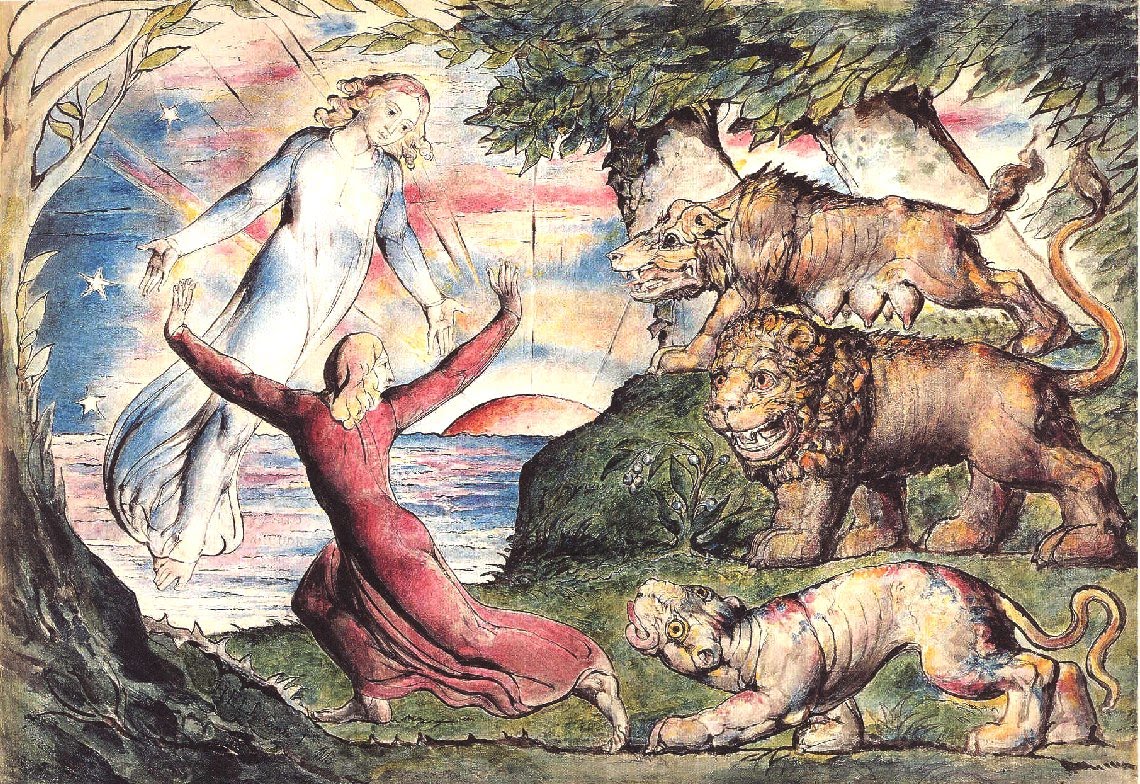
''William Blake’s final, unfinished series of pictures was a set of illustrations for Dante’s Divine Comedy. Letters, marginal notes, and other comments by Blake indicate that while he respected Dante as a thinker and poet, he did not agree with Dante’s theology. It is my contention in this paper that Blake intended his Dante pictures as “corrections” to the text of the Comedy, not merely as illustrations. ''
Writers have mourned its fall and complained about its decadence; but they have never stopped coming. Rome, as the Romans will tell you is the most interesting city in the world. What other place controls the keys to the kingdom of heaven, and kept for so long those to the kingdom of earth as well.Call it spiritual blackmail exercised on the basis of the carrot and the stick.Culture, at all costs was not to be generalized beyond very limited parameters.
Over the centuries, the ancient capital of the world has exerted a powerful attraction on tourists, particularly on writers, who have come to seek inspiration among its ruins. Traveling from distant towns that had once been under its sway, they came to view the dead city, to mourn the fall of its great empire and to grieve over the decadence of its church. Mourning has always seemed the appropriate attitude of writers to adopt in Rome. ”Rome its own sas sepulchre appears,” declaimed Washington Irving as he entered the city for the first time. ”… death seems to have been born in Rome,” Chateaubriand mused as he walked along the Appian Way.
But, it was in Dante’s time that the popes abandoned their traditional residence at the Lateran Palace, to move to Avignon in southern France. Dante considered this defection a sin, punishable by eternal damnation. In the ”Divine Comedy” he assigned a special place in hell for the pope who left the city for Avignon, Clement V, whom he called ”that great cheat” Several other popes got no better treatment; they suffered in hell hanging upside down in a travesty of baptism, being purified with fire instead of holy water.
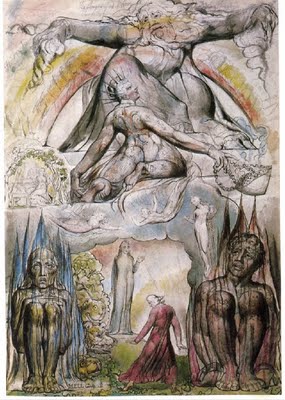
''This painting is labeled in pencil “HELL Canto 2”, but it depicts an elaborate symbolism that appears nowhere in Dante’s written description. Here Blake undertakes the project of combining his own iconographic language with Dante’s story, to make the Comedy into a “corrected” collaboration. The difficulty of interpreting his message is compounded by the fact that the painting is unfinished.''
Most discussions of Dante today treat him as representing an authoritative cultural moment in the Western tradition, as the supreme embodiment of the medieval mind.It is simplistic, and caves into the authoritative and fascistic perspective of such a large institution, yet denies a necessary liberalism that has allowed it to survive for so long while maintaining a centralized control. Viewed as an outdated relic, Dante as ambassador of the Vatican becomes an emblem of everything contemporary critics of the Western canon bitterly hate and reject. The reason they feel that they must attack authors like Dante and displace them from the center of literary study is that these authors have come to stand for orthodoxy and thus seem to enforce the hegemony of Western culture.
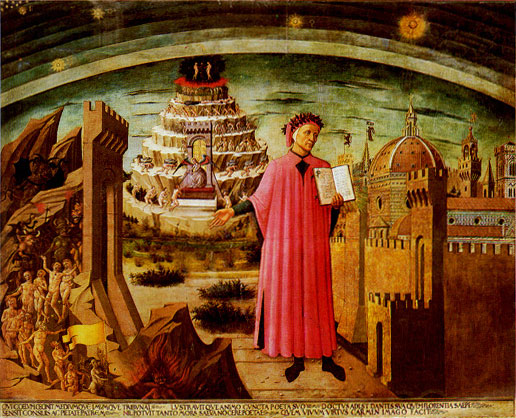
''According to Dante Alighieri's The Divine Comedy and other religious literature, Hell, as we know it, is not just a single entity consisting of a wide field of fire. It is composed of "circles," or levels, and according to Inferno (The Divine Comedy's first "cantiche"), each circle is classified to what type of sin and how grave it is.''
”Critics who wish to champion various forms of non-Western culture have a particular axe to grind with canonical authors like Dante. The contemporary debate over the Western canon seems to be premised on a sharp opposition between Western and non-Western cultures, as if they were complete and irreconcilable antitheses, and even wholly unrelated. One of the principal charges against the Western canon is that it is Eurocentric, that it remains confined within a narrow orbit of European ideas and beliefs, thus excluding all other views of the world. A corrolary of the idea of Eurocentrism is the concept of Orientalism, developed by Edward Said. Said argues that throughout its history, the Occident has defined itself in opposition to the Orient, basing its elevated self-image on a debased vision of the cultural Other. In Said’s argument, the Occident views itself as rational as opposed to an irrational Orient, as emotionally disciplined in contrast to an emotionally uncontrolled Orient, and as masculine over against a feminine Orient.”
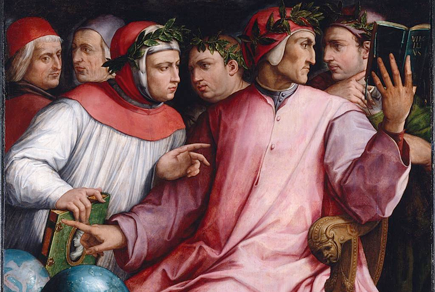
'' Professor Eisner has a B.A. in Italian (1999) and a Ph.D. in Comparative Literature (2005) from Columbia University. His research and teaching focus on medieval Italian literature, particularly the works of Dante, Boccaccio, and Petrarch. He is in the process of completing his first book, tentatively entitled “The Inventive Scribe: Boccaccio and the Making of Italian Literature,” which analyzes Boccaccio’s transcriptions of the vernacular works of Dante, Petrarch, and Cavalcanti in what is now the Vatican's Chigi L V 176. ''
For although Dante, like many later writers, considered Rome inspiring in theory, he had little but contempt for the decadent realities of the city’s life, and did his part to shred Christian stereotypes into the same pot usually reserved for orientalist stereotypes chiefly represented by the Muslim world.When in Rome take no prisoners. He thought it appropriate to compare the sinners being run through a gauntlet of devils in hell as punishment for fraud, to the supposedly devout pilgrims who crowded across the Sant’ Angelo bridge over the Tiber to visit the shrine of Saint Peter at the Vatican.
But most writers found to their surprise that they came to expend more sorrow over Rome’s life than they did over its death. They loved the ruins, but almost everything else tended to shock them. They found the Roman’s decadent, the shopkeepers avaricious, the aristocrats snobbish, the children diseased, and the fleas healthy. As travelers will , they lost their purses, their tempers, their appetites, and even in the cases of Tasso and Keats, their lives. But they rarely lost their point of view. A few of course had happier reactions. Petrarch held the city in reverence, and Stendhal was amused by it; Goethe was delighted by the robust sensuality of the Romans. Tolerant or not, all of its writers described their experiences.
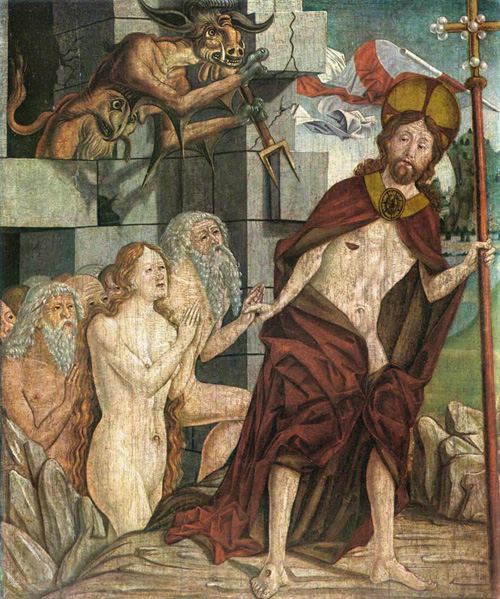
Friedrich Pacher. 1460. ''The Pope, himself, has been quoted in the past as saying that he would let the idea of limbo "drop, since it has always been only a theological hypothesis". He was quoted as saying that limbo has never been a "definitive truth of the faith"."
On Easter Sunday, 1341, the poet Petrarch ascended the Capitoline Hill above the ruins of the Forum to be crowned poet laureate, the first poet to receive the honor from the Roman people since antiquity. He has traveled from his home in Provence for the occasion. Preceded by twelve aristocratic youths dressed in red, six nobles bearing crowns of flowers, and a Senator carrying a wreath of laurel, Petrarch entered the assembly hall of the city to the sound of trumpets and fifes. ”Long live the Sentors!” he shouted three times, and then recited a sonnet in honor of the ancient Romans.
His audience responded with delight, crying ”long live the Capitol and the poet!” Soon after, Petrarch deposited his laurel wreath in the vatican and went home to write a series of penitential poems and a book in which he castigated himself for his faults, not the least of which was his great craving for acclaim.
Dante shared Petrarch’s craving, although he wanted to be crowned poet laureate in his native city of Florence rather than Rome. He never got his wish. But he apparently visited Rome at least once, a few years earlier than Petrarch, and prided himself on being of ”the holy seed of the Romans”. He believed that the feuds that rent Florence, and that sent him into exile for life, were fought between the descendants of the Roman troops who settled in Florence in the first century B.C. and the offspring of the Etruscan natives of the city. The poet had a typically exalted idea of the glory of Rome ; to him the city symbolized the Church’s rule over the world.
Two centuries later the poet Torquato Tasso came to Rome from the court of Ferraro to be crowned as Petrarch had been. Tasso had been insane on and off for the previous twenty years; he was afraid that his enemies were trying to poison him, an idea, which in renaissance italy, was not necessarily a manifestation of paranoia. Having been educated by the jesuits, he was obsessed by the fear of heresy, and once denounced himself to the Inquisition as a possible heretic. The Inquisition let him go; and when a new pope Clement VIII, offered in 1594 to crown him with laurel for his epic poetry, tasso saw it as an assurance that his faith was pure, and that he would be rewarded with a halo in heaven as well.
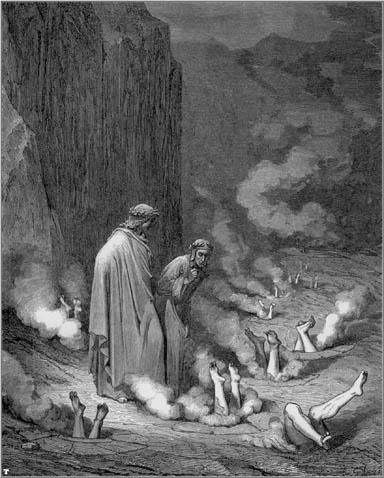
Gustave Dore ''Fraud, however, always involves what Dante considers a perversion of human intelligence-that is, human intelligence used for evil (rather than angelic) purposes. Fraudulent activities always involve the active use of reason; conscious free will is always in operation. ''
As it turned out, Tasso received his heavenly reward before he could enjoy his earthly one. When the time came for him to be crowned, he was too sick to attend the ceremony; he lay dying at the monastery of Sant’ Onofrio, high on one of the seven hills of Rome, where he had sought refuge in order to be as close to heaven as possible.
It was Dante who elaborated and extended the idea of Limbo; as a means of explaining suffering as well as his own articulation on the idea of ”chosen” and the ”elect”. Rome was the physical manifestation of this condition, appealing yet deceiving, embracing yet excluding. In particular, people born before the coming of Christ were denied access to the Christian revelation and thus never had the opportunity to embrace the Christian faith and be saved. Such considerations led to the development among medieval theologians of the idea of Limbo, a place in between, neither quite heaven nor hell. In the standard view, Limbo included two categories: Old Testament worthies who had lived virtuously and anticipated the coming of Christ, along with children who died before having been baptized (thereby dealing with another troublesome issue of salvation). Thus Dante inherited a concept of Limbo, but he developed it in a very unorthodox way, choosing to add to the categories of people admitted to Limbo and shifting his emphasis away from the traditional areas.
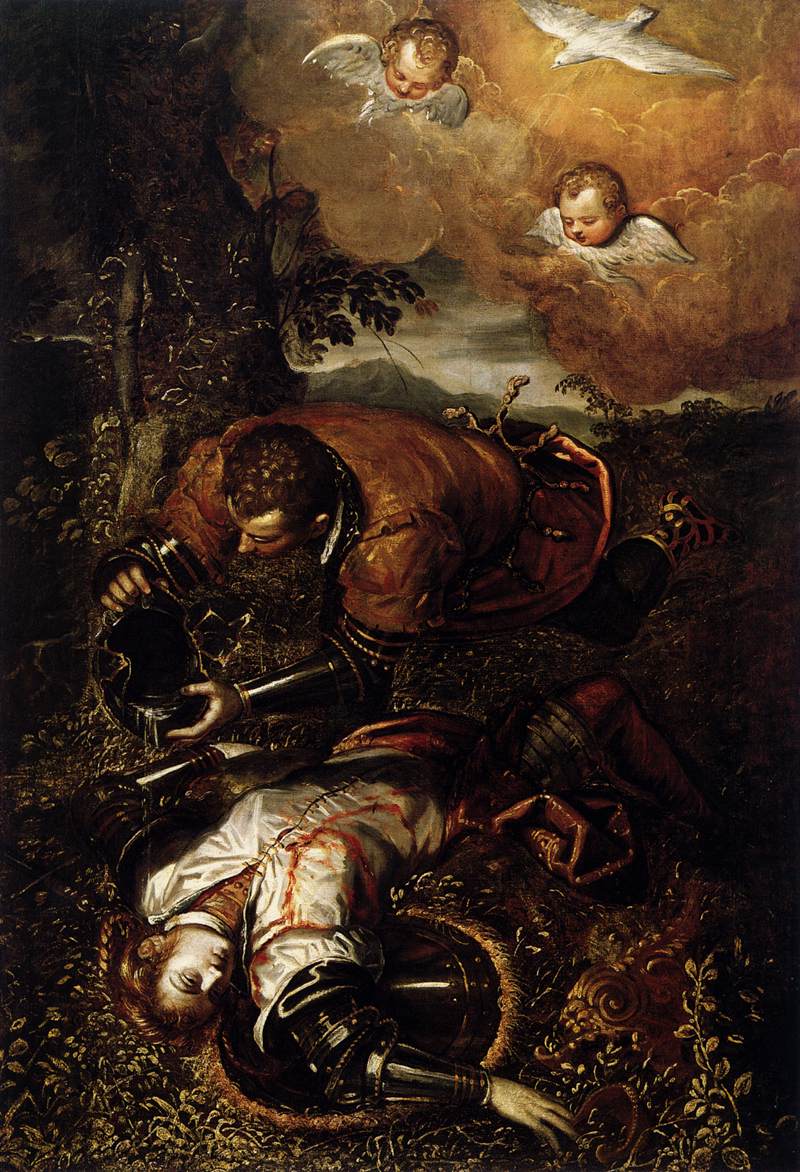
''This work is regarded as one of the best artistic renderings of the crusader epic Gerusalemme Liberata ("Jerusalem Liberated") by Torquato Tasso (1544-1595). With great fidelity to detail, Domenico shows the Christian knight Tancred (d. 1112 in Antioch) baptizing his mortally wounded opponent at that opponent's own wish, after a nocturnal duel. When Tancred opens the helmet he recognizes the Saracen woman warrior Clorinda, with whom he fell in love when he met her by chance at a shady spring after a battle.''
However heretical Dante’s treatment of these virtuous pagans might be, one could argue that he remains within the larger bounds of Christian orthodoxy because after all he presents Limbo as a form of punishment.For many of these writers who came to Rome, a form of purgatory is what they found; a palatable place to exercise a catharsis of the soul. The figures in Limbo are said to suffer because they feel themselves deprived of the true God, for Whom they yearn. However, Dante’s presentation and evolution of Limbo has many sophisticated strands. Unlike Catholic orthodoxy or Marcel Duchamp, Limbo is not creationist or a ”ready made”. At first sight, being in Limbo seems painful, but as the canto proceeds, Dante subtly and quietly starts to modify the first impression we get of Limbo and to mitigate the punishment embodied there.


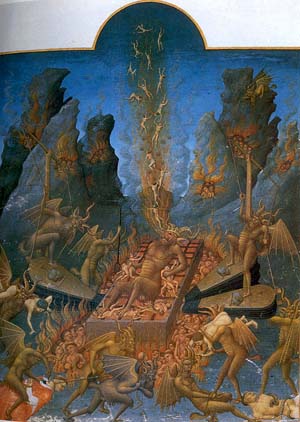
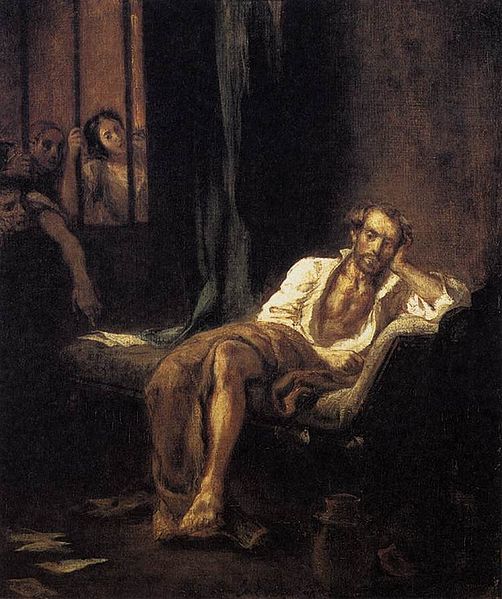



 COMMENTS
COMMENTS
Hi nice blog buddy .iam very impressed with the christian art..its amazing,Thanks for sharing